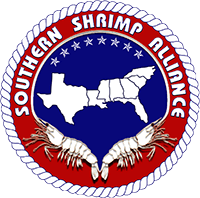SSA capped off a busy few weeks working on the Bureau of Energy Management’s (BOEM) plans to develop offshore wind energy in the Gulf of Mexico when it filed formal written comments on BOEM’s ‘Call for Information and Nominations’ last week. https://shrimpalliance.com/wp-content/uploads/2021/12/SSA-Comments-to-BOEM-Call-for-Information-Gulf-Offshore-Wind-12-16-21-f-1-1.pdf
According to SSA Executive Director John Williams: “Although BOEM has told us that it may be 5 to 10 years before wind energy turbines are constructed and installed in Gulf offshore waters, it is essential that we engage early and vigorously in this process if we are going to achieve our goal of avoiding and minimizing impacts on the Gulf shrimp fishery.”
In those comments, SSA stated:
“The shrimp fishery is the most valuable fishery in the Gulf and the shrimp industry is at the core of the economies of numerous coastal communities throughout the region. The potential cumulative adverse impacts of offshore wind development on the shrimp industry, including both the fishery and shoreside infrastructure (shrimp dealers, processors, and marine chandlers), are likely greater than for any other current ocean user in the Gulf” and “at stake are the many thousands of small family-owned fishing and shoreside businesses and the health of those communities whose economies are dependent on the hundreds of millions of dollars in annual shrimp landings.”
Those comments followed a December 8th BOEM presentation and discussion with the Gulf of Mexico Fishery Management Council’s Shrimp Advisory Panel whose members include SSA President Steve Bosarge and Executive Director John Williams. That was followed by SSA’s participation in a December 14th ‘roundtable’ hosted by the Small Business Administration’s Office of Advocacy to discuss BOEM’s draft ‘Fisheries Mitigation Guidance’, and yet another meeting hosted by BOEM on December 15 to further discuss fishing industry concerns with that draft Guidance.
SSA’s most recent focus has been on ensuring the sufficiency of BOEM’s environmental review process as well as the need for it to use a comprehensive spatial management methodology for choosing sites for offshore wind turbines and transmission lines that bring the power to shore.
As previously reported, SSA has been pushing BOEM Director Amanda Lefton and National Oceanic and Atmospheric Administration (NOAA) Administrator Dr. Richard Spinrad to collaborate in utilizing the spatial management tools developed by NOAA’s National Centers for Coastal Ocean Science (NCCOS) in its recently published offshore aquaculture Atlas. https://shrimpalliance.com/ssa-encouraged-by-noaa-boem-collaboration-on-offshore-wind/
In its December 16th comments, SSA stated:
“BOEM must implement a process that applies state-of-the-art spatial management tools in collaboration with NOAA to ensure transparent and objective siting decisions that are based on the best scientific data and other information available.
SSA believes that the analytical approach to spatial planning applied by the NCCOS in the AOA Atlas would be the most comprehensive, transparent, objective and, therefore, effective tool for supporting critical decision-making regarding the siting of offshore wind facilities in the Call Area and transmission lines both within and shoreward of the Call Area.
This includes suitability modeling and mapping of the full range of relevant civilian and military marine activities in the Gulf along with those elements of the marine ecosystem that would be vulnerable to the cumulative impacts of new, wind energy-related ocean stressors. It also provides an excellent opportunity for stakeholder engagement and for BOEM to receive inputs useful to the development of mapping data and performing suitability analyses.”
On the matter of BOEM’s environmental review process, SSA set forth in its December written comments “what it asserts are essential elements of the process BOEM must follow in evaluating wind energy development options in the Gulf of Mexico that are responsive to the shrimp industry’s interests and concerns while achieving the objective of minimizing adverse impacts on this industry.”
Those essential elements discussed in some detail in SSA’s comments include:
– “the conduct of an environmental review process that is in full compliance with the National Environmental Policy Act (NEPA) mandates to provide sufficiently detailed and robust environmental information on both the cumulative and site-specific impacts of this action in order to adequately support the full range of decisions to be made;
– consultations with NOAA regarding adverse effects on Essential Fish Habitat (EFH), and responses to any recommendations received from NOAA for conserving such habitat as required by section 305(b) of the Magnuson-Stevens Fishery Conservation and Management act (MSA); and
– consultations with NOAA regarding impacts to endangered and threatened species as required by section 7 of the Endangered Species Act (ESA) including the preparation of a comprehensive Biological Opinion assessing the cumulative effects on all affected species.”
SSA noted its comments that the Gulf shrimp fishery is held strictly accountable for the health of threatened and endangered sea turtle populations and other protected species and ecologically sensitive habitats in the Gulf. For example, offshore wind energy transmission lines are known to give off Electromagnetic Fields that may interfere with the ability of sea turtles to navigate to their nesting beaches. Any harm to those sea turtle populations caused by offshore wind energy development in the Gulf will likely lead to further restrictions and economic impacts on the shrimp fishery.
SSA also expressed serious concerns over the rapid pace of BOEM’s offshore wind energy development in the Gulf, stating:
“In addition to the substantive elements of this process, what is absolutely crucial is that the timeline being contemplated by BOEM for implementing each stage and element of its process is sufficient to accommodate adequate stakeholder engagement and to achieve the highest quality and integrity of the spatial management analyses, environmental reviews and consultations.
However, it is not clear that BOEM’s timeline is, in fact, sufficient to achieve these results. Therefore, SSA requests that BOEM reevaluate its timeline for offshore wind energy development in the Gulf based on its full consideration of the comments and information received in this and previous solicitations.”
